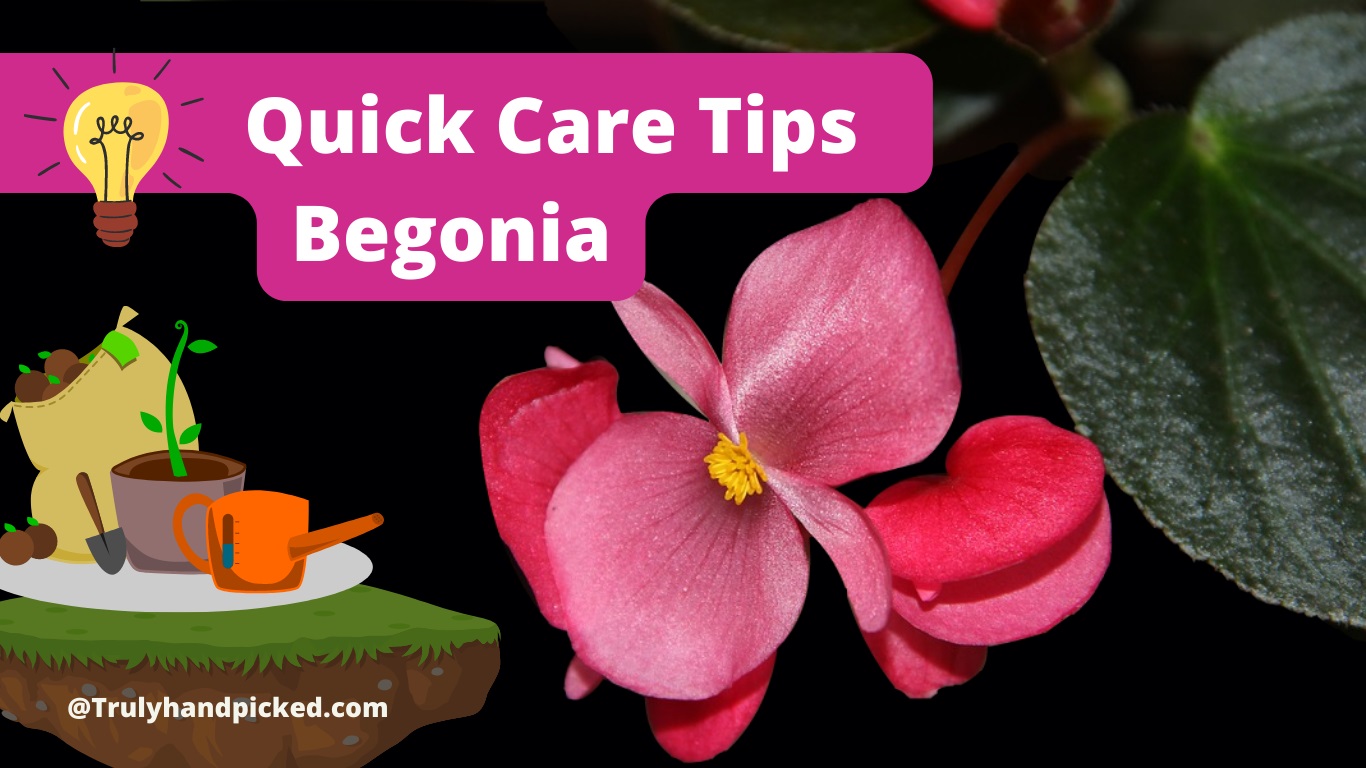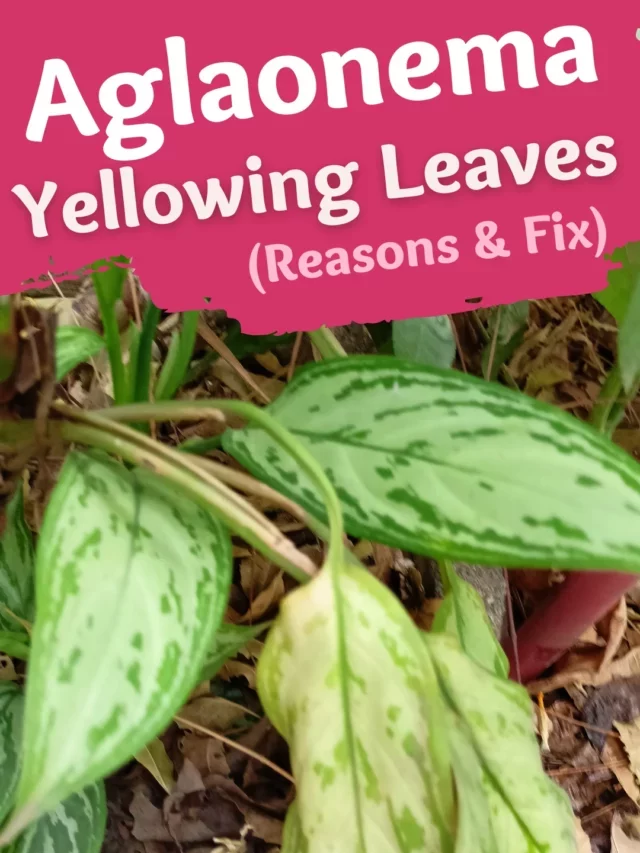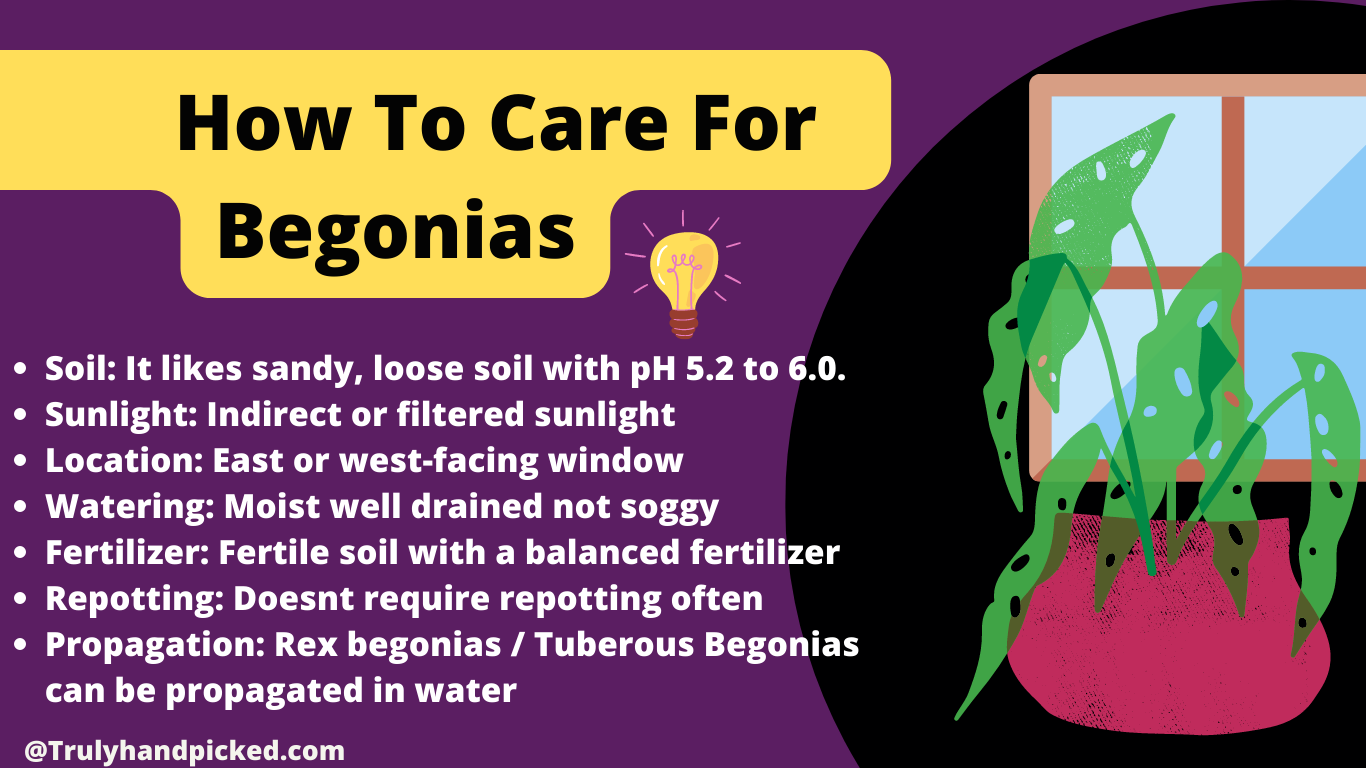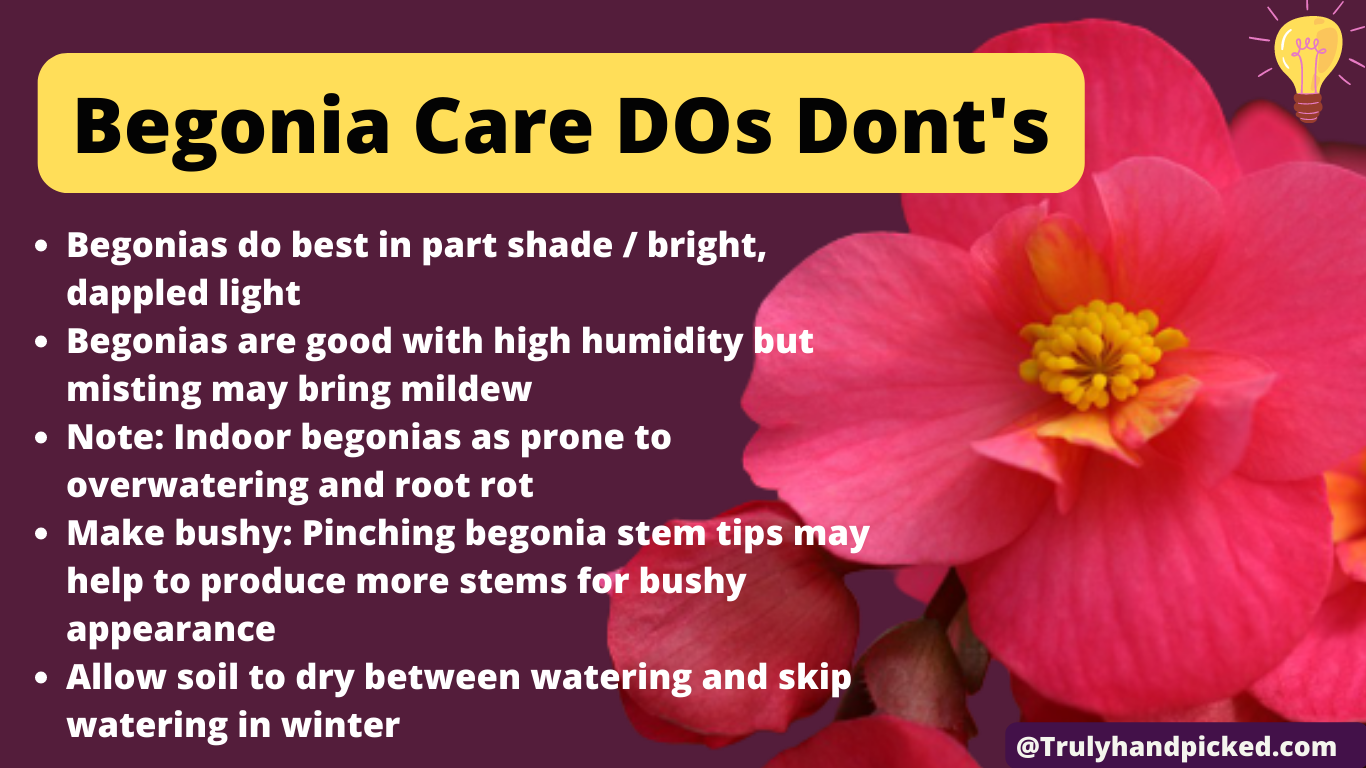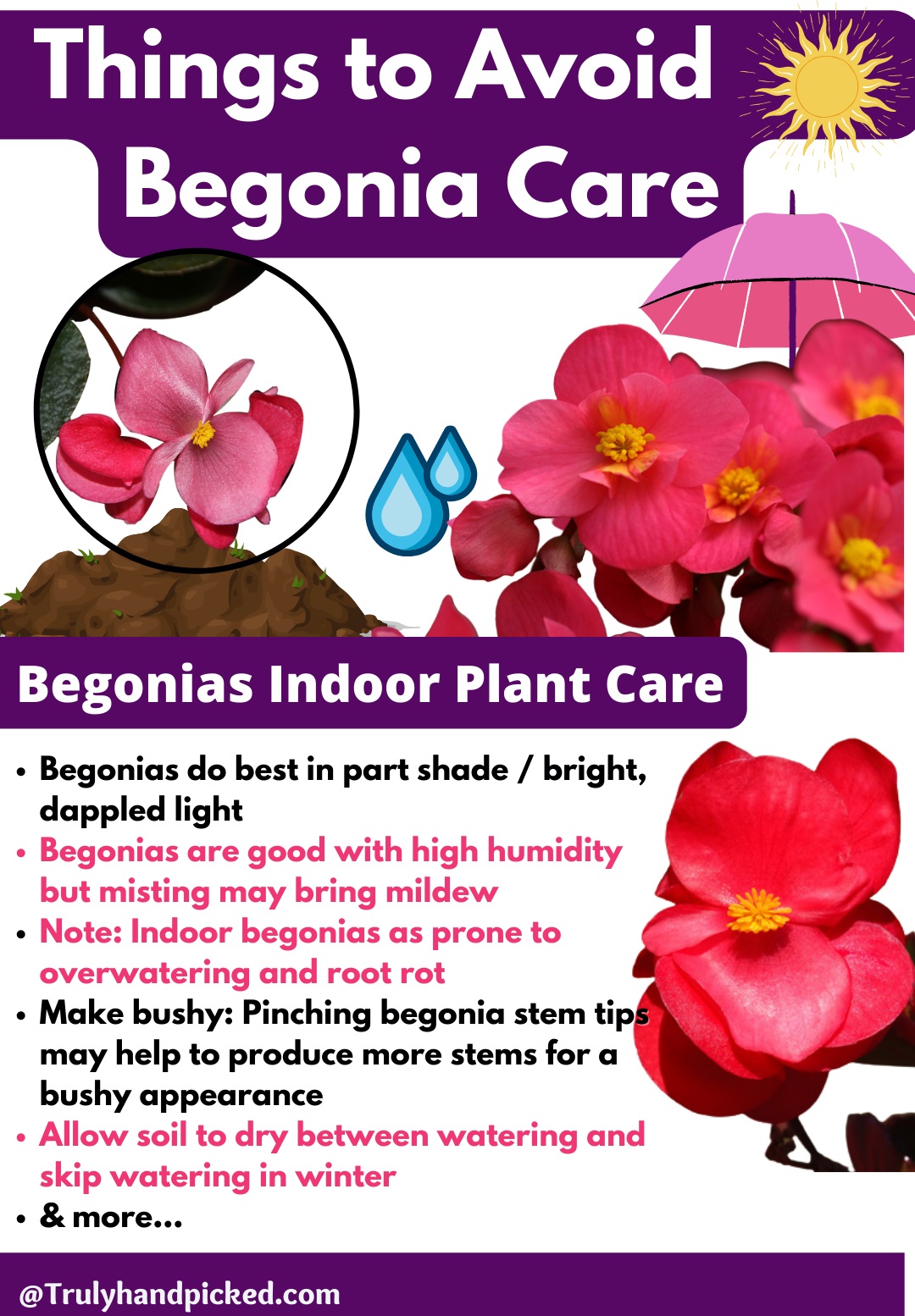Begonias are one of the most easy-to-care flowering plants to grow indoors. If you like to cultivate ornamental plants indoors, then, begonia is probably the most excellent one to go with.
They happily grow in pots/medium containers with proper drainage and moist soil rather soggy. Also, you don’t need to deadhead begonias as they can take care of themselves and shed the spent flowers.
And with bright indirect light for 4-6 hours and a high humid climate, begonia plants grow stunning foliage with astonishing blossoms. Thus, begonia plants can beautify the whole look of your house interior outstandingly, even in the off-season.
Avoid overwatering and root rot, with proper care your begonias will survive indoors for 2 to 3 years happily without any issue. Being root bound they don’t demand repotting often.
Here are some basic quick care tips about this decorative houseplant, you must know before growing this species indoor-
Begonia Plant Care: Quick Overview
Soil: It likes sandy, loose, well-drained soil with a medium pH level between 5.2 to 6.0.
Watering needs: Water your begonia only when the top surface of planting soil turns dry completely
Sunlight Requirement: Begonia plants always want indirect or filtered sunlight. So, try to provide morning sun directly and then, sun with partial shade throughout the day.
Fertilizer: Begonia prefers fully fertile soil fertilized with a balanced fertilizer.
Hardiness Zone: 9 to 11
Quick care tips on growing areca palm and rubber plants for your indoor garden.
Benefits of Growing Begonia Indoor:
Begonia plant not only emphasizes the house interior with its vibrant flowers and ornamental foliage but also benefits us in several other ways. Such as-
- Begonia plant requires only moderate planting care and mere attention to thrive, unlike other ornamental houseplants
- Beautiful foliage and flowers are amazing fillers for your pot or garden.
- There is a wide range of varieties you can get in this single species to pick from
- Begonia flowers are of medicinal properties and thus, treats numerous chronic illnesses expertly
- Growing this plant gives you value for money goodness
- And begonia plants are highly compatible with climate, thus, you can put the planter in any room with bright indirect light.
Soil, Light, Fertilizer, and Begonia Watering Requirements
Now, let’s learn how to grow an indoor begonia plant like an expert gardener with these cultivating details-
Soil and Potting Mix:
Begonia grows best in loose fertile soil that must be drained well. Go for light potting soil with sandy quality and combine with perlite as well as peat moss in equal amounts. Check the drainage quality before going to the plantation to avoid any kind of root rot experience.
How Often to Water Begonia
Less is better than more when it comes to the matter of watering your indoor begonia plants. Never overwater your potted begonia plant, if you want to avoid any root problems. Try to water averagely like ½-1 inch every week and water your begonia plant only the top surface of the planting soil seems dry.
How to Fertilize:
Begonia is a medium-feeder plant and thus you don’t need to feed your plant often. Try to make the potting soil adequately fertile during the plantation. Then, try any slow-release all-purpose balanced fertilizer with the perfect NPK ratio to feed your plant flawlessly.
How much Sun for Begonia – Needed Temperature:
Begonia plants don’t need direct or full sun exposure. They always prefer indirect warm sunlight to thrive best. So, maintain a temperature between 59 to 78 degrees F throughout the day to provide the best climate to your houseplant. Don’t forget that your begonia doesn’t tolerate scorching summer heat. Hence, try to keep your planter always away from direct sunlight.
Location:
You can put it anywhere in your room where it can get indirect light from the Sun. to put it near the window, try to place it near an East or west-facing window, where your begonia plant can get filtered sunlight only. Avoid burning the south-facing windows and less lighting at the north window.
Love indoor plants- learn about a few low-light tolerant plants for indoors.
Prune:
Pruning is also essential for begonia, especially, when you grow them indoors. It allows them to give your plant enough room to thrive to the next level. To do this, simply thin out the heavy foliage part of your begonia plant. Try this only you find that the plant may be seemed overgrown or turn over bushy by surpassing the planter. You need to cut all dead and disease-infected parts from y our plant during this pruning time to keep it healthy properly.
How to Prune and Propagate Begonia:
To prune your plant, follow these steps-
- Wait for the full-grown session of your begonia plant first
- Now, bring a shear or plant scissor and cut out the discolored leaves from your plant
- You should also trim leggy branches during this pruning session
- Look for any disease-infected stem also during this time and cut out those parts carefully
- Don’t leave any dead leaves in your plant before completing the process
- And cut off the tips of larger stems during this pruning session to promote the healthy growth of your favorite begonia plant.
To propagate a begonia plant perfectly, follow these steps below-
- Look for the healthy stems with complete green leaves from your begonia plant first
- Cut that portion carefully with a sharp scissor and put it inside a glass of water
- Use rooting powder if handy
- Try to keep the pot or glass in high humidity, away from direct sunlight
- Wait for 7-8 days and you will see your cutting will start growing root from the bottom gently
- Later plant the cutting into a planter prepared with rich potting mix
Repotting Begonia:
Begonia plants don’t need much repotting due to their complicated root system. They mostly are root bound rather than a need for a wide planter, and thus, try not to disturb their root by repotting, if it is not necessary.
Most of the expert gardeners suggest waiting for the perfect timing of repotting. They prefer it is in the springtime. This season, begonia plants outgrow healthily and thus, usually don’t get disturbed due to the repotting process.
Best Varieties of Begonia to Cultivate Indoor Easily:
Richmond Begonia:
This is a wonderful species of begonia plant that grow big foliage and medium-size flowers in different shades. Richmond begonia belongs to the fibrous-rooted category and changes the blossom shades depending on the sun exposure.
Nonstop Mocca Yellow Begonia:
This category of begonia belongs to the species of the tuberous root and mostly grows for bright flowers than foliage. It can reach a height of almost 12 to 16 inches and thus, is easily manageable while grown indoors.
Ambassador Series Begonia:
This species belongs to the fibrous-rooted section and is popular for its beautiful thick foliage. This category grows large flowers in vibrant shades and thrives bushier than other species of begonia.
Looking for flowering plants for your garden check out this list of plants with white flowers.
Rex Begonia:
This is the best species of begonia to grow indoors due to its interesting foliage and direct sun sensitivity. It belongs to the rhizomatous category and grows the biggest foliage with different bright hues.
Charm Begonia:
Charm begonia belongs to the wax fibrous root category and is popular for its lively flowers. This species can’t grow up to 6-12 inches and thus, it is easily manageable while grown indoors.
Some other popular categories of begonia, which can easily grow in a planter, are-
- Dusty Rose begonia
- Nonstop rose begonia
- Begonia super cascade
- Cocktail series begonia
- Double white begonia
Pinterest Image on Begonia Quick Care Tips
FAQ: Caring for Begonia
Can You Plant Begonia in the Ground?
Begonia plants can easily grow outdoor in the ground with moderate care and planting essentials.
What is Blooming Time for Begonia?
Begonia plant blooms from early summer until the frost comes with consistent care and proper plantation.
